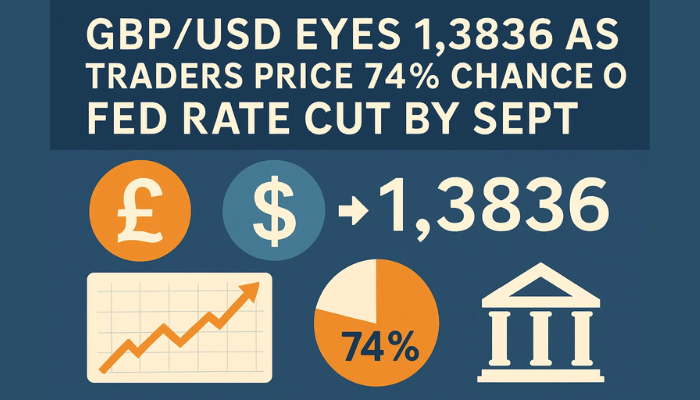USD Holds Up, Despite Lower JOLTs Jobs and Soft Manufacturing
Today we saw a soft round of economic data from the US, but the market was little moved, showing that it is mostly long on the USD
The USD has been soft since early June, but the FED rhetoric in the last meeting after the 25 bps rate hike has changed the situation. Markets were betting on an end to the FED hiking cycle after this month’s hike, but on Wednesday they brought back the rhetoric of letting the data dictate the future of more hikes, possibly in September.
On Thursday we had a great round of data from the US, with the Q2 GDP coming at 2.4% against 1.8% expected, retail sales jumping higher and the unemployment claims falling lower, which shows a tightening labour market. As a result, the USD has been experiencing some decent bullish momentum in the last several trading days.
Although, today’s data wasn’t as great, but it wasn’t too bad either. ISM manufacturing PMI missed expectations, but it did show improvement and components are indicating a possible reversal from the lows.
ISM Manufacturing PMI for July 2023

- ISM Manufacturing PMI for July 46.4 points versus 46.8 expected
- ISM manufacturing for June was 46.0 points
- Prices paid 42.6 points vs 42.8 expected. Last month was 41.8 points
- Employment 44.4 points vs 48.0 expected. Last month 48.1 points
- New orders 47.3 points vs 45.6 prior
US manufacturing sector has been experiencing a recession, but we are seeing indications that the worst of the downturn might be over. You believe that there is a potential for positive growth (upside risk) in the manufacturing sector in 2024. One of the factors contributing to this optimistic outlook is the “new orders” component, which appears to be showing signs of improvement. As “new orders” is a forward-looking data point, it suggests that businesses are receiving more orders for their products, which could be an early indication of a potential recovery in the manufacturing industry.

New orders component
Jolts job openings also declined but the JOLTs data is older data (from June) and there is some concern that it may not be “true” to the real demand for workers. Nevertheless, looking at the chart above it is off the boil from 2022 levels, but still high historically (see chart above).
The JOLTs Job Openings for June 2023

- Job Openings 9.582M vs 9.610M estimate
- Prior month 9.824M (lower than the 9.935M estimate). Prior month revise to 9.616M
- The rate of job openings was also unchanged at 5.8%.
- The number of hires in June decreased to 5.9 million (-326,000), while the hire rate was little changed at 3.8%. The decrease in hires was seen in durable goods manufacturing (-54,000) and finance and insurance (-54,000)
- Total separations, including quits, layoffs and discharges, and other separations, decreased in June to 5.6 million (-288,000). The rate of separations was little changed at 3.6%
-
The number of quits decreased to 3.8 million (-295,000) and the quit rate to 2.4%. The number of quits decreased in retail trade (-95,000), health care and social assistance (-75,000), and construction (-51,000). Quits increased in arts, entertainment, and recreation (+20,000).
Details show:
-
Industries with increased job openings included health care and social assistance (+136,000) and state and local government excluding education (+62,000).
-
Industries with decreased job openings included transportation, warehousing, and utilities (-78,000), state and local government education (-29,000), and federal government (-21,000).
-
Decreased separations were seen in retail trade (-134,000), health care and social assistance (-84,000), and durable goods manufacturing (-54,000). Separations increased in professional and business services (+129,000).
-
The number of layoffs and discharges in June was unchanged at 1.5 million, with the rate remaining at 1.0%. Layoffs and discharges increased in professional and business services (+112,000) and decreased in durable goods manufacturing (-26,000) and in wholesale trade (-26,000).
-
Other separations, including retirements, deaths, disability, and transfers to other locations of the same firm, remained the same in June at 339,000.
-
In June, establishments with 1 to 9 employees saw a decrease in their quit rates and an increase in their other separation rates. Establishments with more than 5,000 employees saw increases in their quit rates.
Traders also tend to watch things like the quits rate for the strength of the jobs market. if the quits rate moves higher it is indicative of workers feeling confident about finding another job. Looking at the chart of the quits rate below, it has moved back lower and toward the level pre-pandemic. Although still high relative to historical levels, there are some signs that workers are not so anxious to quit their jobs (and get another easily).

- Check out our free forex signals
- Follow the top economic events on FX Leaders economic calendar
- Trade better, discover more Forex Trading Strategies
- Open a FREE Trading Account


